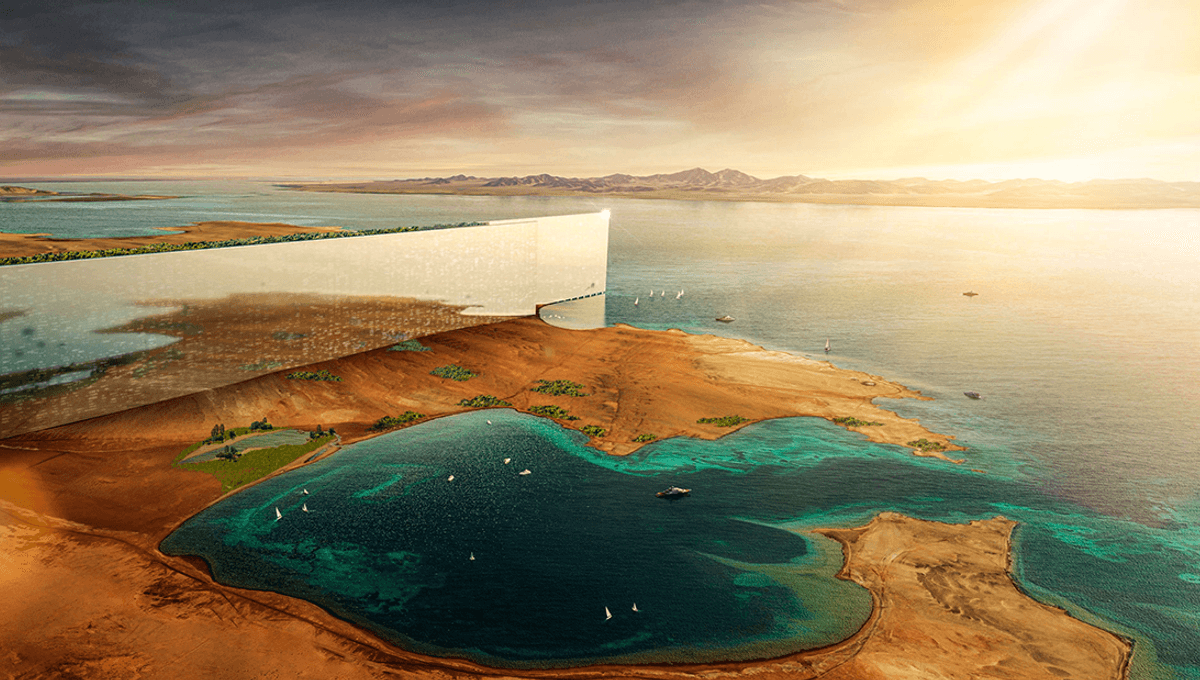Imagine a futuristic city named NEOM, where a groundbreaking project called “The Line” is set to revolutionize urban living. This ambitious plan aims to create a 170-kilometer-long skyscraper that will house 9 million residents. The best part? Everything they need will be just a five-minute journey away, thanks to the city’s innovative design. And if that’s not impressive enough, a high-speed train will whisk people from one end of The Line to the other in a mere 20 minutes.
NEOM is not just any city; it’s a visionary solution to the livability and environmental crises plaguing our world. The masterminds behind NEOM are determined to deliver imaginative solutions that address these pressing issues head-on.
However, a recent paper has raised concerns about The Line’s design and proposed a simple yet transformative fix: turning the line into a circle.
While The Line promises convenience with its five-minute proximity to facilities, it inadvertently creates inefficiencies when it comes to work, schools, and social interactions. Long commutes become the norm, diminishing the quality of life for its residents.
The paper highlights a startling fact: if the 9 million inhabitants are evenly distributed in The Line, the average distance between any two people would be a staggering 57 kilometers (35 miles). In comparison, two random people in Johannesburg, occupying only 2 percent of the surface area, would be just 33 kilometers (20 miles) apart. The Line’s design maximizes the distance between its inhabitants, isolating them from each other.
Transportation within The Line is also a concern. The team estimates that traveling from one random location to another would take over 60 minutes, even with 86 train stations scattered throughout the complex. This means that at least 47 percent of the population would have a commute longer than an hour, leaving most people living too far from their destinations.
The Complexity Science Hub, the team behind the paper, also raises worries about energy consumption. Taller buildings, a prominent feature of The Line, require more energy compared to environmentally friendly medium-sized structures. Instead of merely pointing out these issues, the team proposes a solution: bending the line into a circle.
By transforming The Line into The Circle, which occupies the same surface area, but with a radius of only 3.3 kilometers (2 miles), the team envisions a city where people are much closer to each other. In The Circle, the expected distance between two random individuals is a mere 2.9 kilometers. With 24 percent of the population within walking distance (2 kilometers or 1.2 miles), and 66 percent reachable within 2 kilometers, mobility becomes more active and convenient.
The Circle would render high-speed rail redundant, as residents could easily walk or cycle for most of their journeys, relying on buses for longer distances. Admittedly, building The Circle would be even more challenging than The Line, but if you’re going to embark on a grand and slightly audacious project in the desert, it’s worth going the extra mile to ensure a livable and thriving community for its residents.
The study detailing these findings is published in NPJ Urban Sustainability.








